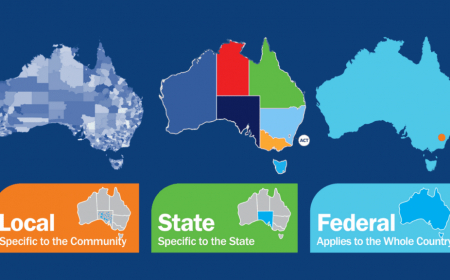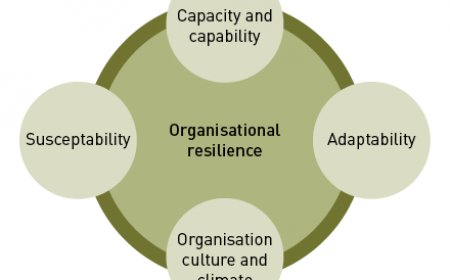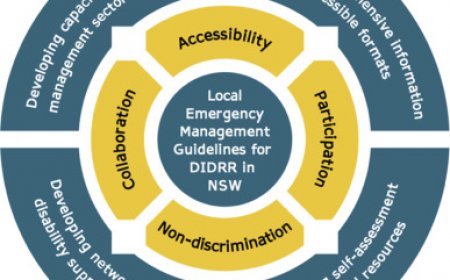Australia Housing Market: Is Now the Time to Buy?
Explore whether now is the right time to buy in the Australian housing market. Learn about current trends, financial considerations, government incentives, and expert predictions to make informed decisions.
The Australian housing market has long been a focal point of economic and social discourse, characterized by its unique blend of resilience, volatility, and regional diversity. Over the past few decades, the market has experienced significant fluctuations, driven by a confluence of factors such as population growth, interest rate policies, government incentives, and global economic trends. These dynamics have shaped a landscape where housing affordability remains a pressing concern for many Australians, particularly first-time buyers and low-income households.
One of the defining features of the Australian housing market is its regional variability . While metropolitan areas like Sydney, Melbourne, and Brisbane often dominate headlines with their soaring property prices, regional towns and rural areas present a starkly different picture, offering more affordable options but often lacking the infrastructure and amenities of urban centers. This dichotomy underscores the importance of understanding local market conditions before making any purchasing decisions.
Recent years have seen unprecedented shifts in the housing market, exacerbated by external shocks such as the COVID-19 pandemic and geopolitical uncertainties. The pandemic, in particular, triggered a surge in demand for housing as remote work became the norm, prompting many Australians to seek larger homes or relocate to less densely populated areas. At the same time, record-low interest rates fueled borrowing capacity, further intensifying competition and driving up prices.
However, the market’s trajectory is not solely dictated by demand-side factors. Supply-side constraints, including land availability, zoning regulations, and construction delays, have also played a pivotal role in shaping housing dynamics. These constraints have contributed to a persistent undersupply of affordable housing, exacerbating affordability challenges and widening the gap between supply and demand.
As the market continues to evolve, potential buyers face a complex decision-making process. Factors such as rising interest rates, inflationary pressures, and shifting demographic trends add layers of uncertainty, making it essential to assess whether now is an opportune time to enter the market. This article delves into the current state of the Australian housing market, exploring key drivers, emerging trends, and expert insights to help prospective buyers navigate this intricate landscape.
Current State of the Australian Housing Market
The Australian housing market is currently navigating a period of recalibration following years of unprecedented growth, with recent data painting a nuanced picture of both opportunities and challenges for buyers. As of late 2023, national property prices have shown signs of stabilization after a prolonged period of rapid appreciation. According to the CoreLogic Home Value Index , annual price growth has moderated significantly, with some regions even experiencing slight declines. This deceleration can be attributed to a combination of macroeconomic factors, including rising interest rates and tighter lending conditions, which have tempered buyer enthusiasm and curbed speculative activity.
Despite these adjustments, certain segments of the market remain resilient. Regional areas, in particular, continue to outperform capital cities in terms of price stability and growth. For instance, towns in Queensland and Tasmania have reported steady demand, driven by lifestyle migration trends that gained momentum during the pandemic. Conversely, major metropolitan markets like Sydney and Melbourne have faced more pronounced corrections, with median house prices declining by approximately 5-7% over the past year. These declines, however, are largely concentrated in premium segments, while more affordable properties have retained stronger demand.
Affordability remains a critical issue across the board, with the ratio of median house prices to household incomes reaching alarming levels in several cities. In Sydney, for example, the median house price exceeds $1.4 million , requiring a household income of over $200,000 to comfortably service a mortgage under current lending criteria. This disparity has pushed many first-time buyers to the sidelines, forcing them to delay homeownership or explore alternative pathways such as shared equity schemes and rent-to-buy programs.
On the supply side, new housing approvals have shown modest growth, but construction delays persist due to ongoing labor shortages and material cost inflation. These bottlenecks have limited the influx of new stock, exacerbating the existing imbalance between supply and demand. Meanwhile, rental markets have tightened considerably, with vacancy rates plummeting to historic lows in cities like Perth and Adelaide , further complicating the housing landscape for those unable to purchase.
In summary, the current state of the Australian housing market reflects a delicate equilibrium, shaped by moderating price growth, persistent affordability challenges, and uneven supply dynamics. While some indicators suggest a more favorable environment for buyers, others highlight lingering risks that warrant careful consideration.
Key Drivers Influencing the Housing Market
The Australian housing market is shaped by a multitude of interconnected factors, each playing a pivotal role in determining price trends, buyer behavior, and overall market stability. Among the most influential drivers are interest rates , government policies , and population growth , all of which exert significant pressure on housing demand and affordability.
Interest rates stand out as one of the most immediate and impactful determinants of market activity. Set by the Reserve Bank of Australia (RBA) , interest rates directly influence borrowing costs and, consequently, the purchasing power of homebuyers. In recent years, historically low interest rates spurred a surge in housing demand, as buyers capitalized on reduced mortgage repayments to enter the market or upgrade their properties. However, the RBA’s recent decision to raise rates in response to inflationary pressures has introduced a new layer of complexity. Higher interest rates increase monthly mortgage obligations, effectively reducing the pool of eligible buyers and dampening demand. This shift has led to slower price growth and, in some cases, price corrections, particularly in high-value markets where affordability was already stretched.
Government policies also play a crucial role in shaping the housing landscape. Initiatives such as the First Home Owner Grant (FHOG) , HomeBuilder scheme , and shared equity programs have sought to alleviate affordability pressures and stimulate demand among first-time buyers. These measures have had varying degrees of success, with some programs driving short-term spikes in activity while others provided longer-term support for market participation. Additionally, tax incentives like negative gearing and capital gains tax discounts have historically incentivized property investment, contributing to price inflation and investor dominance in certain segments. However, debates around reforming these policies to improve affordability continue to influence market sentiment and buyer expectations.
Population growth is another cornerstone of housing market dynamics, particularly in urban centers. Australia’s robust immigration program and natural population increase have traditionally driven demand for housing, especially in cities like Sydney and Melbourne. The post-pandemic recovery has reignited this trend, with net overseas migration projected to exceed pre-pandemic levels. This influx of new residents places upward pressure on housing demand, straining existing infrastructure and exacerbating supply shortages. Conversely, regional areas have benefited from internal migration trends, as remote work arrangements enable workers to relocate to more affordable locales, redistributing demand and reshaping market patterns.
Collectively, these drivers create a complex web of influences that dictate the trajectory of the housing market. While interest rates and government policies often act as immediate levers, population growth serves as a foundational force that underpins long-term demand. Understanding the interplay between these factors is essential for assessing the viability of entering the market at any given time.
Regional Variations in the Australian Housing Market
The Australian housing market exhibits significant regional variations, with distinct trends emerging across states and territories. These differences are shaped by factors such as economic activity, population distribution, and local government policies, creating a diverse landscape that defies a one-size-fits-all analysis. For instance, New South Wales (NSW) and Victoria , home to Australia’s two largest cities, Sydney and Melbourne, have historically dominated the national housing narrative due to their high property values and intense competition. However, recent data reveals a divergence in performance, with Sydney experiencing sharper price declines compared to Melbourne’s relatively stable trajectory.
In Queensland , the housing market has demonstrated remarkable resilience, buoyed by interstate migration and lifestyle-driven demand. Coastal cities like the Gold Coast and Sunshine Coast have become hotspots for buyers seeking affordability and proximity to amenities, driving strong price growth despite broader market cooling. Similarly, Tasmania has emerged as an unexpected performer, with Hobart recording consistent demand fueled by its relatively low entry costs and improving infrastructure. These regional successes highlight the appeal of smaller cities and towns as viable alternatives to the increasingly unaffordable capitals.
Conversely, Western Australia and South Australia present contrasting narratives. Perth’s housing market, once plagued by oversupply and stagnation, has rebounded sharply due to mining sector recovery and renewed investor interest. Median house prices have risen steadily, though affordability remains comparatively favorable. In contrast, Adelaide’s market has cooled slightly, with price growth moderating amid concerns about sustainability. The Northern Territory and Australian Capital Territory (ACT) occupy unique positions within the national framework. Darwin’s market continues to grapple with volatility, while Canberra benefits from stable demand driven by public sector employment and higher-than-average household incomes.
These regional disparities underscore the importance of localized analysis when evaluating the housing market. Buyers must consider not only statewide trends but also micro-level factors such as council planning policies, transport links, and community amenities. By understanding these nuances, prospective purchasers can identify opportunities and risks specific to their desired location.
Expert Opinions on the Current Housing Market
Industry experts and analysts offer a spectrum of perspectives on the current state of the Australian housing market , reflecting the complexity and uncertainty inherent in its dynamics. Prominent economists and real estate professionals generally agree that the market is undergoing a period of recalibration, but opinions diverge on the implications for buyers. Some view the recent moderation in price growth as a correction phase , signaling a return to more sustainable valuations after years of rapid appreciation. Others caution against interpreting these trends as a definitive downturn, emphasizing the market’s historical resilience and capacity for recovery.
For instance, Tim Lawless , Research Director at CoreLogic, highlights the dual impact of rising interest rates and tighter credit conditions as key forces driving the slowdown. He notes that while these factors have tempered buyer activity, they have also created opportunities for those with financial flexibility to secure properties at more favorable terms. Lawless predicts that the market will stabilize over the next 12 to 18 months, provided macroeconomic conditions remain supportive. Conversely, Shane Oliver , Chief Economist at AMP Capital, adopts a more cautious stance, warning of potential headwinds such as prolonged inflation and global economic instability. Oliver suggests that buyers should exercise prudence, particularly in high-value markets where downside risks remain elevated.
Real estate agents and property consultants echo these sentiments, albeit with a focus on practical strategies for navigating the current environment. Many emphasize the importance of thorough research and patience, urging buyers to avoid impulsive decisions amid fluctuating conditions. For example, Nerida Conisbee , Chief Economist at realestate.com.au, advises first-time buyers to explore regional markets where affordability and growth potential align. She also underscores the value of leveraging government incentives, such as shared equity schemes, to bridge the deposit gap.
While consensus remains elusive, these expert opinions collectively underscore the need for a balanced approach. Buyers are encouraged to weigh both risks and opportunities, considering their financial circumstances and long-term objectives before committing to a purchase.
Financial Considerations for Prospective Buyers
Entering the Australian housing market requires a comprehensive understanding of the financial implications involved, particularly in today’s volatile economic climate. One of the most critical factors for prospective buyers is securing a mortgage , which serves as the primary mechanism for financing a property purchase. Mortgage rates, influenced by the Reserve Bank of Australia’s monetary policy decisions, have a direct impact on borrowing costs. With recent interest rate hikes, buyers must carefully assess their ability to manage increased repayments over the life of the loan. Fixed-rate mortgages offer stability by locking in rates for a specified period, shielding borrowers from future rate increases, while variable-rate loans provide flexibility but expose buyers to potential fluctuations.
Beyond mortgage rates, additional costs such as stamp duty , legal fees , and inspection charges can significantly inflate the upfront financial burden. Stamp duty, in particular, varies by state and property value, often amounting to tens of thousands of dollars in high-demand areas. First-time buyers may benefit from exemptions or concessions, depending on their location and eligibility criteria. Furthermore, ongoing expenses like property taxes , insurance , and maintenance must be factored into long-term budgeting. Neglecting these recurring costs can strain household finances, especially for those purchasing older or larger properties.
Another crucial aspect is the deposit requirement , which typically ranges from 10% to 20% of the property’s value. A larger deposit not only reduces the loan-to-value ratio (LVR) but also minimizes the need for lenders’ mortgage insurance (LMI), a costly addition for those borrowing above 80% LVR. Saving for a substantial deposit in a high-cost market can be daunting, prompting many buyers to explore alternative pathways such as family guarantees or government-backed shared equity schemes. These options, while helpful, come with their own set of financial and legal considerations that require careful evaluation.
Ultimately, financial preparedness extends beyond securing a mortgage. Prospective buyers must conduct thorough assessments of their income stability, debt obligations, and emergency savings to ensure they can sustain homeownership without compromising financial security. Engaging with financial advisors or mortgage brokers can provide valuable insights and help tailor strategies to individual circumstances, ensuring informed and sustainable decisions in the housing market.
Long-Term Investment Potential of the Housing Market
The Australian housing market has long been regarded as a cornerstone of wealth creation, offering significant long-term investment potential for those who approach it strategically. Historically, residential property has delivered robust returns, outpacing many other asset classes over extended periods. Data from the ASX/Russell Long-Term Investing Report indicates that Australian real estate has generated average annual returns of approximately 8-10% over the past three decades, driven by consistent price appreciation and rental yield contributions. This performance underscores the attractiveness of housing as a vehicle for building equity and generating passive income, particularly in a low-interest-rate environment.
However, the investment potential of the housing market is not uniform across all regions or property types. Certain segments, such as inner-city apartments or properties in economically stagnant areas, may underperform relative to standalone houses in growth corridors. For instance, suburban and regional markets experiencing infrastructure upgrades or population inflows often exhibit stronger capital growth prospects. Investors must also consider the balance between capital gains and rental yields , as high-value properties in premium locations may offer lower rental returns compared to more affordable assets in high-demand rental markets.
Moreover, the long-term outlook is influenced by structural factors such as demographic shifts and urbanization trends . Australia’s aging population and evolving household structures are expected to drive demand for diverse housing options, including downsizer properties and multi-generational homes. Additionally, the rise of remote work has reshaped preferences, with buyers increasingly prioritizing space and amenity over proximity to city centers. These trends suggest that properties in well-connected regional areas could outperform traditional urban hubs in the coming years.
While the housing market remains a compelling investment avenue, potential buyers must adopt a disciplined approach. Conducting thorough due diligence, diversifying portfolios, and aligning investments with personal risk tolerance are essential steps to maximizing returns while mitigating exposure to market volatility.
Risks and Challenges in the Current Housing Market
While the Australian housing market presents numerous opportunities, it is not without its share of risks and challenges, particularly for prospective buyers navigating today’s uncertain economic landscape. One of the most pressing concerns is the potential for price volatility , which can arise from a variety of factors, including interest rate fluctuations, changes in government policy, and shifts in consumer confidence. For instance, the recent series of interest rate hikes by the Reserve Bank of Australia has already begun to cool demand in certain segments, leading to price corrections in previously overheated markets. Such volatility can pose significant risks for buyers who may find themselves facing negative equity if property values decline shortly after purchase.
Another critical challenge is the pervasive issue of housing affordability , which remains a formidable barrier for many Australians. Despite recent moderation in price growth, the gap between wages and property values continues to widen, making it increasingly difficult for first-time buyers and low-income households to enter the market. This affordability crisis is compounded by rising living costs and inflationary pressures, which strain household budgets and limit saving capacity. Even for those who manage to secure financing, the burden of high mortgage repayments can erode financial resilience, leaving buyers vulnerable to economic shocks or unexpected expenses.
Additionally, supply constraints persist as a structural challenge, undermining efforts to address affordability and meet growing demand. Delays in construction timelines, coupled with shortages of skilled labor and building materials, have stifled the delivery of new housing stock. This imbalance exacerbates competition, particularly in high-demand areas, and contributes to upward pressure on prices. Furthermore, regulatory hurdles such as zoning restrictions and approval processes often hinder the development of affordable housing solutions, perpetuating the cycle of undersupply.
Buyers must also contend with the psychological and financial toll of market uncertainty . Speculation about future interest rate movements, economic downturns, or policy reforms can create hesitation and anxiety, deterring potential purchasers from making timely decisions. This uncertainty is particularly acute for those relying on variable-rate mortgages, whose repayments could escalate significantly if rates continue to rise. Collectively, these risks and challenges underscore the importance of thorough research, prudent financial planning, and a long-term perspective when considering a property purchase in the current market.
Government Policies and Incentives Supporting Homebuyers
The Australian government has implemented a range of policies and incentives aimed at supporting homebuyers and addressing the persistent challenges of housing affordability. These initiatives are designed to reduce barriers to entry, particularly for first-time buyers, and stimulate activity in the housing market. One of the most prominent programs is the First Home Owner Grant (FHOG) , which provides a one-time payment to eligible purchasers buying or building their first home. The grant amount varies by state and territory, with some regions offering additional bonuses for buyers constructing new properties or purchasing in designated regional areas. This financial boost can significantly ease the upfront costs associated with homeownership, such as stamp duty and deposits.
Another key initiative is the Home Guarantee Scheme , which includes multiple programs tailored to different buyer profiles. The First Home Guarantee , for instance, allows first-time buyers to secure a property with a deposit as low as 5% , without the need for lenders’ mortgage insurance (LMI). Similarly, the Family Home Guarantee supports single parents by enabling them to purchase a home with a 2% deposit , providing a lifeline for individuals who might otherwise struggle to enter the market. These guarantees are underpinned by government backing, reducing lender risk and expanding access to finance for eligible applicants.
Shared equity schemes represent another innovative approach to enhancing affordability. Programs like the First Home Buyer Choice allow the government to co-invest in a property alongside the buyer, reducing the required deposit and loan amount. This arrangement not only lowers upfront costs but also decreases ongoing mortgage repayments, making homeownership more attainable for low- to middle-income earners. Additionally, state-specific initiatives, such as Victorian Homebuyer Fund and NSW Shared Equity Scheme , further expand options for buyers in targeted regions.
Tax incentives also play a role in supporting homebuyers, particularly through measures like stamp duty concessions and first-home buyer exemptions . These policies aim to alleviate the financial burden of transaction costs, which can be prohibitively high in expensive markets. While these incentives have proven effective in boosting participation, critics argue that they may inadvertently contribute to price inflation by increasing buyer purchasing power. Nonetheless, these programs collectively demonstrate the government’s commitment to fostering accessibility and equity in the housing market.
Market Trends and Predictions for the Next 12 Months
Looking ahead, the Australian housing market is poised for a period of continued adjustment, shaped by evolving economic conditions, shifting buyer behavior, and ongoing policy interventions. Analysts predict that the next 12 months will likely see a gradual stabilization in property prices, particularly as the full impact of recent interest rate hikes becomes more apparent. According to forecasts from institutions like Moody’s Analytics and SQM Research , national price declines are expected to moderate, with some regions potentially returning to modest growth by mid-2024. This stabilization will be driven by a combination of factors, including anticipated easing in inflationary pressures and potential adjustments to monetary policy by the Reserve Bank of Australia.
One notable trend is the growing divergence between metropolitan and regional markets. While capital cities like Sydney and Melbourne may experience slower recovery due to their reliance on high-value transactions, regional areas are likely to maintain stronger momentum. Lifestyle migration, fueled by remote work arrangements and affordability considerations, will continue to bolster demand in smaller towns and coastal communities. Additionally, infrastructure investments, such as transport upgrades and regional development projects, are expected to enhance the appeal of these areas, further supporting price resilience.
Another emerging trend is the increasing adoption of technology-driven solutions in the property market. Digital platforms for virtual inspections, online auctions, and streamlined mortgage applications are becoming standard practices, catering to tech-savvy buyers and sellers. These innovations not only improve efficiency but also broaden market access, particularly for first-time buyers and investors seeking convenience. Furthermore, the rise of sustainable housing is gaining traction, with energy-efficient designs and eco-friendly materials becoming key selling points. This shift aligns with growing environmental awareness and government incentives promoting green building practices.
Demographic shifts will also play a pivotal role in shaping market dynamics. The aging population is expected to drive demand for downsizer properties and retirement living options, while younger generations prioritize affordability and flexibility. Collectively, these trends suggest a market that is adapting to changing needs and circumstances, offering both challenges and opportunities for prospective buyers in the year ahead.
Accessibility in the Australian Housing Market
Ensuring accessibility in the Australian housing market is a multifaceted challenge that extends beyond affordability to encompass inclusivity, equitable opportunities, and support for diverse buyer profiles. Accessibility is particularly critical for marginalized groups, including first-time buyers, low-income households, Indigenous Australians, and individuals with disabilities, who often face systemic barriers when attempting to enter the property market. Addressing these challenges requires a combination of targeted government policies, innovative housing solutions, and community-driven initiatives.
One of the primary obstacles to accessibility is the prohibitive cost of entry, which disproportionately affects vulnerable populations. To mitigate this, programs like the First Home Owner Grant (FHOG) and shared equity schemes have been instrumental in reducing upfront costs and expanding eligibility for homeownership. However, these measures often fall short of addressing the deeper structural issues, such as insufficient supply of affordable housing and discriminatory lending practices. Expanding social housing stock and implementing rent-to-buy models could provide viable pathways for those excluded from traditional ownership routes.
For individuals with disabilities, physical and financial accessibility remains a significant concern. Properties that comply with universal design principles—such as step-free entrances, wider doorways, and adaptable layouts—are still scarce, limiting options for disabled buyers and renters. Advocacy groups have called for stricter enforcement of accessibility standards in new developments and incentives for retrofitting existing properties. Additionally, financial products tailored to the needs of disabled buyers, such as specialized grants or low-interest loans, could further enhance inclusivity.
Cultural accessibility is another dimension that warrants attention, particularly for Indigenous Australians. Programs like the Indigenous Home Ownership Program (IHOP) aim to bridge the gap by providing culturally appropriate financial counseling and support services. However, achieving true equity requires addressing broader socioeconomic disparities and fostering partnerships with Indigenous communities to co-design housing solutions that reflect their unique needs and aspirations.
By prioritizing accessibility in policy and practice, the Australian housing market can move closer to becoming a truly inclusive space where all individuals, regardless of background or circumstance, have the opportunity to achieve secure and stable housing.
How to Navigate the Australian Housing Market
Navigating the Australian housing market successfully requires a strategic approach that balances research, financial planning, and adaptability to changing conditions. For prospective buyers, the first step is conducting thorough market research to understand regional trends, property values, and growth potential. Tools like CoreLogic , Domain , and realestate.com.au provide valuable insights into median prices, auction clearance rates, and suburb performance, enabling buyers to identify areas that align with their budget and lifestyle preferences. Attending open houses and engaging with local real estate agents can also offer firsthand knowledge of neighborhood dynamics and property conditions.
Once a target area is identified, buyers should focus on financial preparation . This involves assessing borrowing capacity, reviewing credit scores, and saving for a substantial deposit to minimize reliance on lenders’ mortgage insurance (LMI). Consulting with a mortgage broker or financial advisor can help identify competitive loan products and structure financing in a way that maximizes affordability. Additionally, buyers should account for ancillary costs such as stamp duty, legal fees, and moving expenses to avoid financial strain post-purchase.
Timing is another critical factor in navigating the market effectively. Monitoring interest rate trends and government incentives can help buyers capitalize on favorable conditions. For instance, purchasing during a period of price moderation or taking advantage of temporary grants can enhance affordability. Equally important is maintaining flexibility and patience; rushing into a decision amidst market uncertainty can lead to unfavorable outcomes. By adopting a disciplined and informed approach, buyers can position themselves to make confident and sustainable choices in the housing market.
Conclusion: Is Now the Right Time to Buy in Australia?
In conclusion, determining whether now is the right time to buy in the Australian housing market hinges on a careful evaluation of personal circumstances, financial readiness, and market conditions. While recent trends indicate a moderation in price growth and increased opportunities in certain regions, challenges such as rising interest rates, affordability constraints, and supply shortages persist. For financially prepared buyers with long-term goals, the current environment may present a window of opportunity, particularly in regional markets or areas benefiting from infrastructure investments. However, those facing budgetary limitations or uncertainty about future economic conditions may find it prudent to delay their purchase until market stability improves. Ultimately, success in navigating the housing market lies in thorough research, strategic planning, and a clear understanding of individual priorities and risks.
10 Frequently Asked Questions (FAQs)
-
Is the Australian housing market currently affordable for first-time buyers?
Affordability remains a challenge, but government incentives and regional opportunities can make entry feasible for some buyers. -
How do interest rates affect the housing market?
Rising interest rates increase borrowing costs, reducing buyer demand and potentially leading to price corrections. -
What government programs support first-time homebuyers?
Programs include the First Home Owner Grant (FHOG), Home Guarantee Scheme, and shared equity initiatives. -
Are regional areas better options than capital cities for buying property?
Regional areas often offer better affordability and growth potential, particularly for lifestyle-driven buyers. -
What are the risks of buying in a volatile market?
Risks include potential price declines, negative equity, and financial strain from rising mortgage repayments. -
How does supply shortage impact housing prices?
Limited housing stock drives up competition and prices, exacerbating affordability challenges. -
What should I consider before buying a property?
Factors include location, budget, long-term plans, market trends, and additional costs like stamp duty and maintenance. -
Can technology help simplify the home-buying process?
Yes, digital tools for virtual inspections, online auctions, and mortgage applications streamline the process. -
How do demographic trends influence the housing market?
Aging populations and remote work trends shape demand for downsizer properties and regional housing. -
What is the outlook for the Australian housing market in 2024?
Experts predict gradual stabilization, with regional markets outperforming capitals and modest price growth in some areas.
What's Your Reaction?
 Like
0
Like
0
 Dislike
0
Dislike
0
 Love
0
Love
0
 Funny
0
Funny
0
 Angry
0
Angry
0
 Sad
0
Sad
0
 Wow
0
Wow
0











































